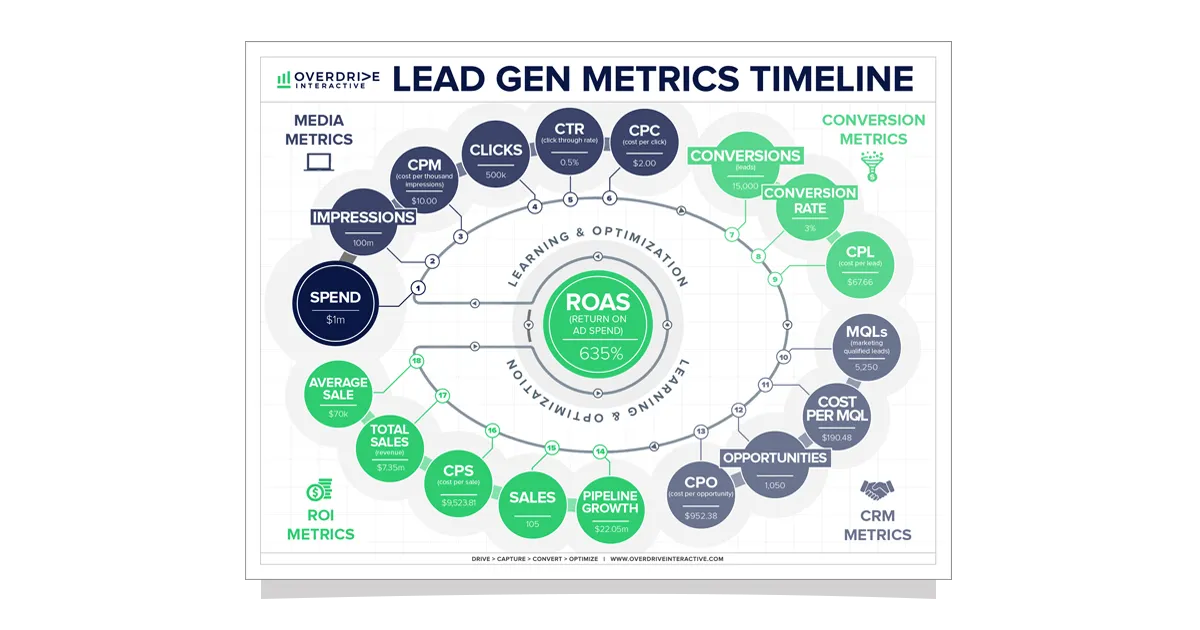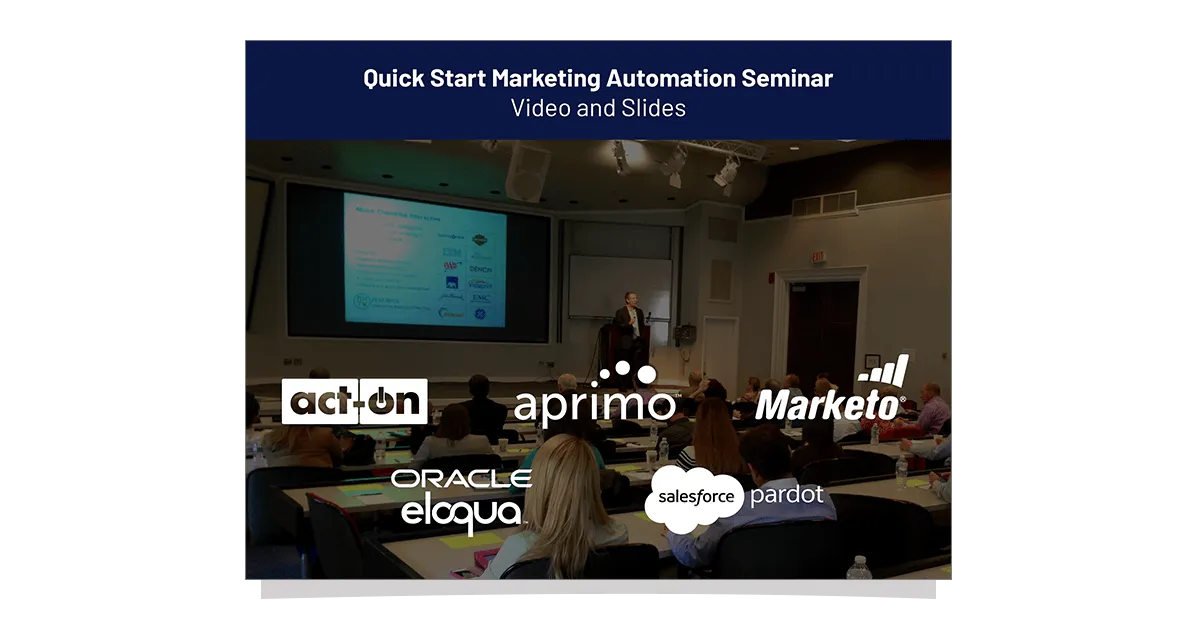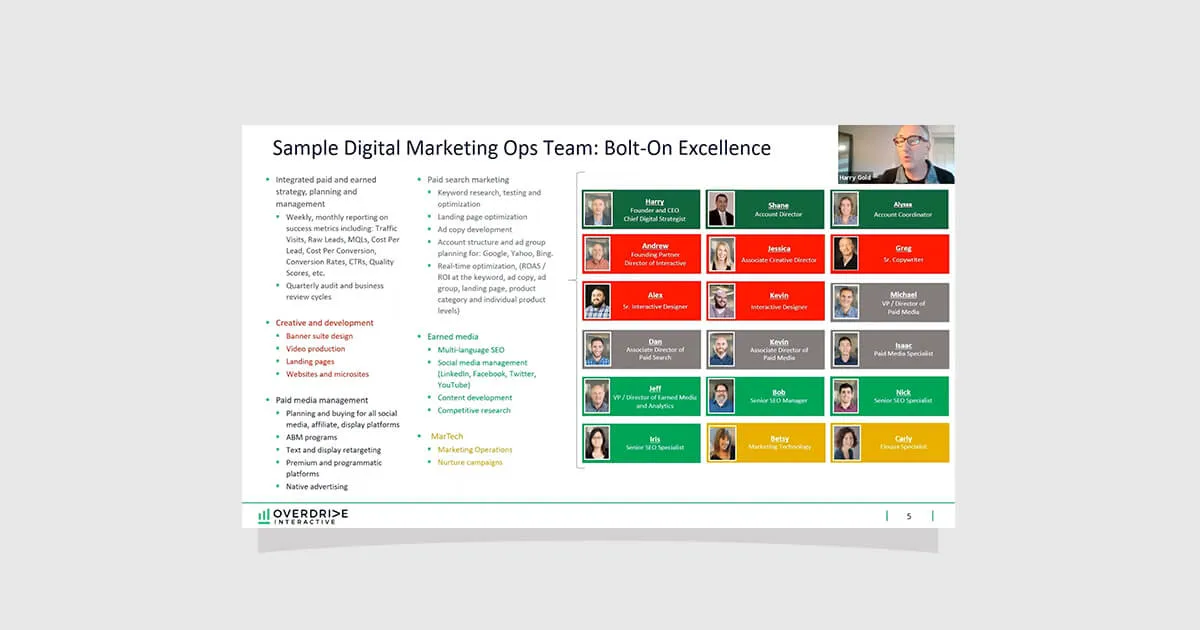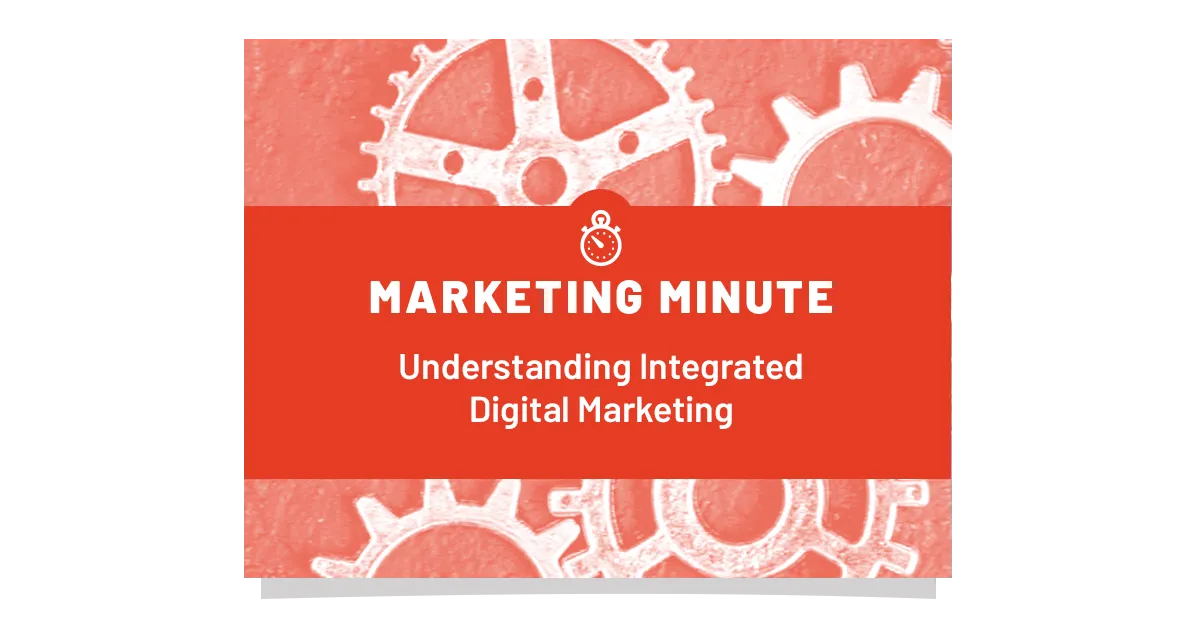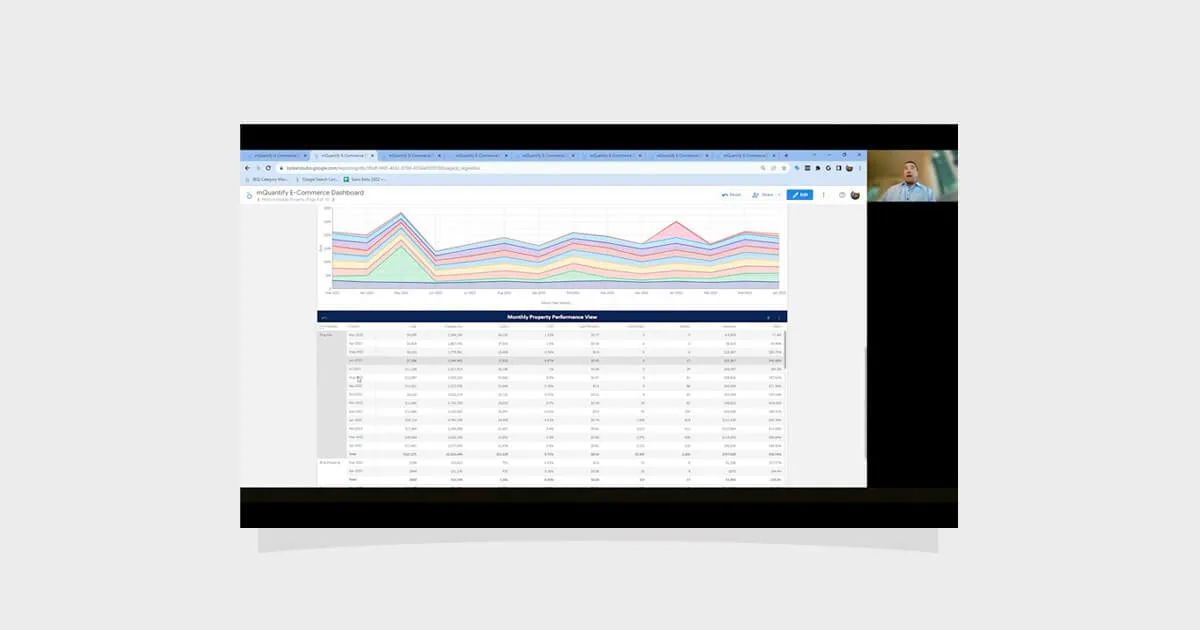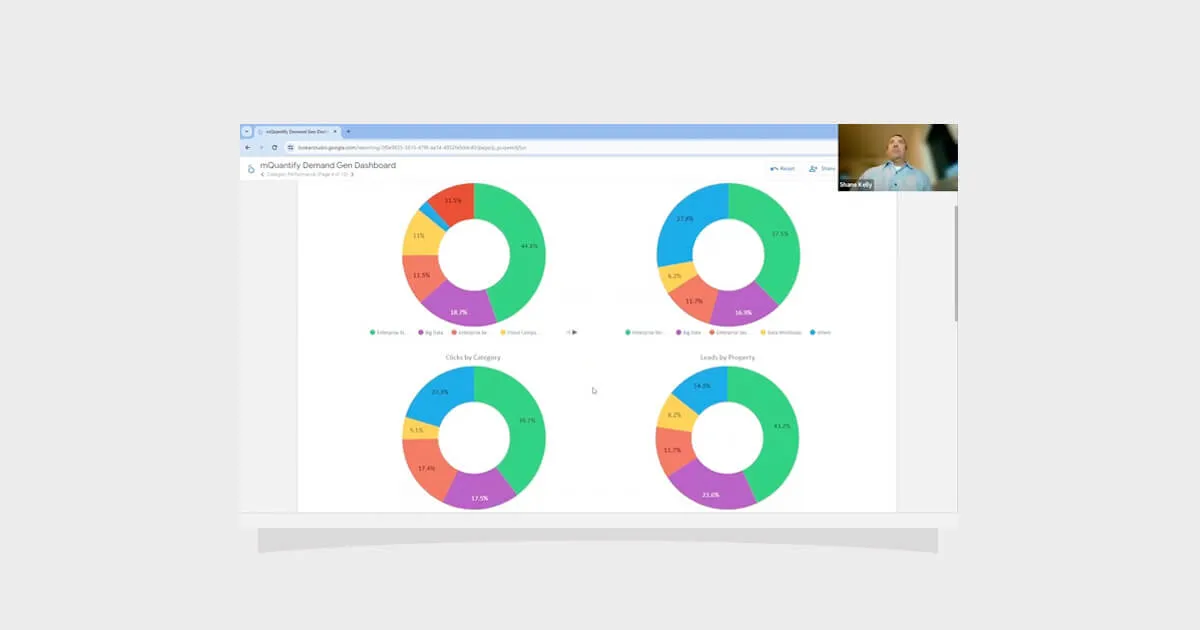Google’s March 2025 Core Update Rollout Complete
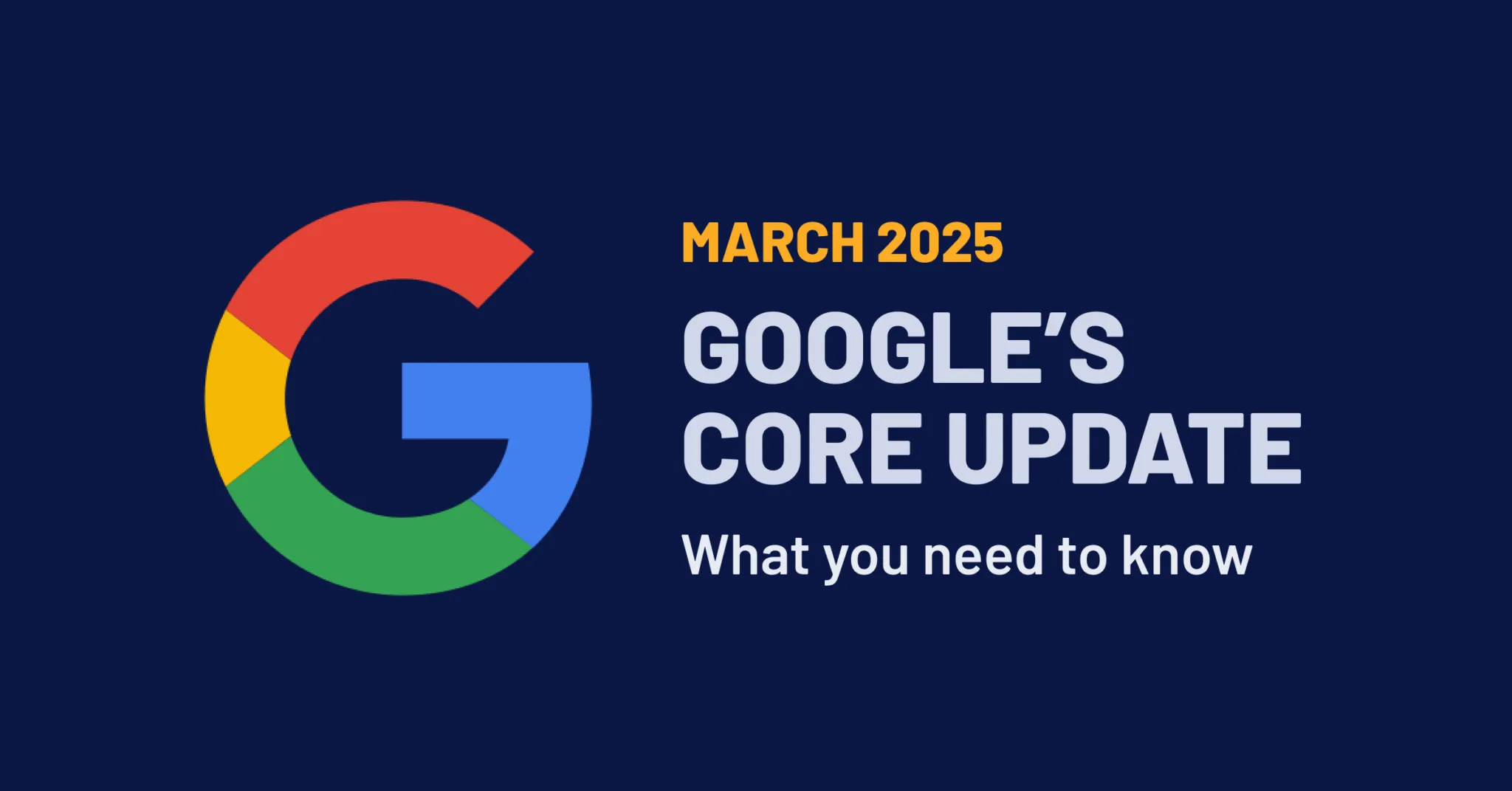
What Actually Changed?
Unlike product reviews updates or spam updates, Google core updates don’t target one specific element of SEO. Instead, they’re designed to improve how Google’s core ranking systems assess content — its relevance, quality, depth, and usefulness to searchers.
The March 2025 update appears to have produced noticeable volatility, though its impact was somewhat more measured compared to previous rollouts like December 2024 or March 2024. Rank-tracking platforms like Semrush Sensor and MozCast flagged ranking fluctuations across key verticals, with industries like healthcare, education, and news media feeling the most disruption.
Some of the most affected sites saw their positions rise or fall by multiple places overnight, underscoring the unpredictable nature of these updates.
But what many marketers don’t realize is this: algorithm volatility is an opportunity — not just a threat.
What This Means for Your SEO (and What to Do Next)
The worst thing you can do in response to a core update is to panic. The best thing? Get strategic.
1. Re-Evaluate Content Quality Using Google’s EEAT Signals
Google has emphasized EEAT — Experience, Expertise, Authoritativeness, and Trust — more than ever. Post-update, now’s the time to audit your site and ask:
- Is your content authored or reviewed by subject matter experts?
- Are your pages demonstrating topical authority in a clear, structured way?
- Do you cite credible sources and include author bios?
- Is your content updated regularly?
Answering “no” to any of the above may suggest that competitors with higher EEAT signals are outperforming you in rankings. This is where content marketing meets technical SEO — and both need to work in sync.
2. Double Down on Search Intent Alignment
Google’s ultimate goal is to serve content that satisfies user intent. Many sites that lost rankings in this update appear to have failed that test.
Ask yourself:
- Are your pages answering the why behind a user’s query?
- Are you addressing informational, transactional, and navigational intents where appropriate?
- Is your keyword targeting strategy up-to-date with current SERP behavior?
Using tools like Search Console, SEMrush, and Ahrefs, you can assess which queries are slipping and which pages might need realignment with today’s intent patterns.
3. Optimize for On-SERP SEO and Featured Snippets
Another subtle shift we observed during this update was an increased reliance on SERP features — featured snippets, People Also Ask boxes, and Knowledge Panels.
If you’re not optimizing your content to win these placements, you’re missing out on zero-click visibility that builds authority.
Start by:
- Structuring your content with H1-H3 headers and schema markup
- Writing concise answers to common questions in your niche
- Using bullet points, tables, and definitions where appropriate
This isn’t just a content play — it’s strategic visibility engineering.
What You Shouldn’t Do
It’s tempting to tear everything down when rankings dip. Don’t.
Google has reiterated — again and again — that there are no “fixes” for core updates. If your traffic dipped, it doesn’t necessarily mean you did something wrong. Often, it means your competitors did something better.
Avoid:
- Keyword stuffing or over-optimizing in a reactionary way
- Drastically changing your site structure without a plan
- Publishing thin or AI-generated content just to increase volume
Instead, focus on sustained improvements in content depth, UX, and crawlability.
Use the Update as a Wake-Up Call
Every core update is a reminder that SEO isn’t a one-and-done project. It’s an evolving discipline that blends technical knowledge with audience empathy.
If your rankings went up: build on that momentum.
If they went down: don’t despair — audit, iterate, and optimize.
At Overdrive Interactive, we treat updates like this as a chance to recalibrate and realign your digital presence for long-term growth. Our SEO team works across industries to improve content quality, fix technical issues, build authoritative backlinks, and future-proof our clients’ visibility in search.
Ready to Get Back on Top?
Whether your site was hit by the March 2025 update or you’re just looking to strengthen your SEO strategy, Overdrive Interactive can help.
We bring together technical SEO, content marketing, UX, and analytics into a unified growth engine. Let us show you how strategic optimization can drive measurable results — not just rankings, but conversions and revenue. Contact us today to ensure your site ranks where it matters most!
Overview of Google’s Core Algorithm Updates: Focus and Impact Since 2012
Google’s March 2025 Core Update Rollout Complete

Download the guide to:
What Actually Changed?
Unlike product reviews updates or spam updates, Google core updates don’t target one specific element of SEO. Instead, they’re designed to improve how Google’s core ranking systems assess content — its relevance, quality, depth, and usefulness to searchers.
The March 2025 update appears to have produced noticeable volatility, though its impact was somewhat more measured compared to previous rollouts like December 2024 or March 2024. Rank-tracking platforms like Semrush Sensor and MozCast flagged ranking fluctuations across key verticals, with industries like healthcare, education, and news media feeling the most disruption.
Some of the most affected sites saw their positions rise or fall by multiple places overnight, underscoring the unpredictable nature of these updates.
But what many marketers don’t realize is this: algorithm volatility is an opportunity — not just a threat.
What This Means for Your SEO (and What to Do Next)
The worst thing you can do in response to a core update is to panic. The best thing? Get strategic.
1. Re-Evaluate Content Quality Using Google’s EEAT Signals
Google has emphasized EEAT — Experience, Expertise, Authoritativeness, and Trust — more than ever. Post-update, now’s the time to audit your site and ask:
- Is your content authored or reviewed by subject matter experts?
- Are your pages demonstrating topical authority in a clear, structured way?
- Do you cite credible sources and include author bios?
- Is your content updated regularly?
Answering “no” to any of the above may suggest that competitors with higher EEAT signals are outperforming you in rankings. This is where content marketing meets technical SEO — and both need to work in sync.
2. Double Down on Search Intent Alignment
Google’s ultimate goal is to serve content that satisfies user intent. Many sites that lost rankings in this update appear to have failed that test.
Ask yourself:
- Are your pages answering the why behind a user’s query?
- Are you addressing informational, transactional, and navigational intents where appropriate?
- Is your keyword targeting strategy up-to-date with current SERP behavior?
Using tools like Search Console, SEMrush, and Ahrefs, you can assess which queries are slipping and which pages might need realignment with today’s intent patterns.
3. Optimize for On-SERP SEO and Featured Snippets
Another subtle shift we observed during this update was an increased reliance on SERP features — featured snippets, People Also Ask boxes, and Knowledge Panels.
If you’re not optimizing your content to win these placements, you’re missing out on zero-click visibility that builds authority.
Start by:
- Structuring your content with H1-H3 headers and schema markup
- Writing concise answers to common questions in your niche
- Using bullet points, tables, and definitions where appropriate
This isn’t just a content play — it’s strategic visibility engineering.
What You Shouldn’t Do
It’s tempting to tear everything down when rankings dip. Don’t.
Google has reiterated — again and again — that there are no “fixes” for core updates. If your traffic dipped, it doesn’t necessarily mean you did something wrong. Often, it means your competitors did something better.
Avoid:
- Keyword stuffing or over-optimizing in a reactionary way
- Drastically changing your site structure without a plan
- Publishing thin or AI-generated content just to increase volume
Instead, focus on sustained improvements in content depth, UX, and crawlability.
Use the Update as a Wake-Up Call
Every core update is a reminder that SEO isn’t a one-and-done project. It’s an evolving discipline that blends technical knowledge with audience empathy.
If your rankings went up: build on that momentum.
If they went down: don’t despair — audit, iterate, and optimize.
At Overdrive Interactive, we treat updates like this as a chance to recalibrate and realign your digital presence for long-term growth. Our SEO team works across industries to improve content quality, fix technical issues, build authoritative backlinks, and future-proof our clients’ visibility in search.
Ready to Get Back on Top?
Whether your site was hit by the March 2025 update or you’re just looking to strengthen your SEO strategy, Overdrive Interactive can help.
We bring together technical SEO, content marketing, UX, and analytics into a unified growth engine. Let us show you how strategic optimization can drive measurable results — not just rankings, but conversions and revenue. Contact us today to ensure your site ranks where it matters most!
Overview of Google’s Core Algorithm Updates: Focus and Impact Since 2012
Google’s March 2025 Core Update Rollout Complete

Download the guide to:
What Actually Changed?
Unlike product reviews updates or spam updates, Google core updates don’t target one specific element of SEO. Instead, they’re designed to improve how Google’s core ranking systems assess content — its relevance, quality, depth, and usefulness to searchers.
The March 2025 update appears to have produced noticeable volatility, though its impact was somewhat more measured compared to previous rollouts like December 2024 or March 2024. Rank-tracking platforms like Semrush Sensor and MozCast flagged ranking fluctuations across key verticals, with industries like healthcare, education, and news media feeling the most disruption.
Some of the most affected sites saw their positions rise or fall by multiple places overnight, underscoring the unpredictable nature of these updates.
But what many marketers don’t realize is this: algorithm volatility is an opportunity — not just a threat.
What This Means for Your SEO (and What to Do Next)
The worst thing you can do in response to a core update is to panic. The best thing? Get strategic.
1. Re-Evaluate Content Quality Using Google’s EEAT Signals
Google has emphasized EEAT — Experience, Expertise, Authoritativeness, and Trust — more than ever. Post-update, now’s the time to audit your site and ask:
- Is your content authored or reviewed by subject matter experts?
- Are your pages demonstrating topical authority in a clear, structured way?
- Do you cite credible sources and include author bios?
- Is your content updated regularly?
Answering “no” to any of the above may suggest that competitors with higher EEAT signals are outperforming you in rankings. This is where content marketing meets technical SEO — and both need to work in sync.
2. Double Down on Search Intent Alignment
Google’s ultimate goal is to serve content that satisfies user intent. Many sites that lost rankings in this update appear to have failed that test.
Ask yourself:
- Are your pages answering the why behind a user’s query?
- Are you addressing informational, transactional, and navigational intents where appropriate?
- Is your keyword targeting strategy up-to-date with current SERP behavior?
Using tools like Search Console, SEMrush, and Ahrefs, you can assess which queries are slipping and which pages might need realignment with today’s intent patterns.
3. Optimize for On-SERP SEO and Featured Snippets
Another subtle shift we observed during this update was an increased reliance on SERP features — featured snippets, People Also Ask boxes, and Knowledge Panels.
If you’re not optimizing your content to win these placements, you’re missing out on zero-click visibility that builds authority.
Start by:
- Structuring your content with H1-H3 headers and schema markup
- Writing concise answers to common questions in your niche
- Using bullet points, tables, and definitions where appropriate
This isn’t just a content play — it’s strategic visibility engineering.
What You Shouldn’t Do
It’s tempting to tear everything down when rankings dip. Don’t.
Google has reiterated — again and again — that there are no “fixes” for core updates. If your traffic dipped, it doesn’t necessarily mean you did something wrong. Often, it means your competitors did something better.
Avoid:
- Keyword stuffing or over-optimizing in a reactionary way
- Drastically changing your site structure without a plan
- Publishing thin or AI-generated content just to increase volume
Instead, focus on sustained improvements in content depth, UX, and crawlability.
Use the Update as a Wake-Up Call
Every core update is a reminder that SEO isn’t a one-and-done project. It’s an evolving discipline that blends technical knowledge with audience empathy.
If your rankings went up: build on that momentum.
If they went down: don’t despair — audit, iterate, and optimize.
At Overdrive Interactive, we treat updates like this as a chance to recalibrate and realign your digital presence for long-term growth. Our SEO team works across industries to improve content quality, fix technical issues, build authoritative backlinks, and future-proof our clients’ visibility in search.
Ready to Get Back on Top?
Whether your site was hit by the March 2025 update or you’re just looking to strengthen your SEO strategy, Overdrive Interactive can help.
We bring together technical SEO, content marketing, UX, and analytics into a unified growth engine. Let us show you how strategic optimization can drive measurable results — not just rankings, but conversions and revenue. Contact us today to ensure your site ranks where it matters most!
Overview of Google’s Core Algorithm Updates: Focus and Impact Since 2012
Google’s March 2025 Core Update Rollout Complete

Key Insights From Our Research
What Actually Changed?
Unlike product reviews updates or spam updates, Google core updates don’t target one specific element of SEO. Instead, they’re designed to improve how Google’s core ranking systems assess content — its relevance, quality, depth, and usefulness to searchers.
The March 2025 update appears to have produced noticeable volatility, though its impact was somewhat more measured compared to previous rollouts like December 2024 or March 2024. Rank-tracking platforms like Semrush Sensor and MozCast flagged ranking fluctuations across key verticals, with industries like healthcare, education, and news media feeling the most disruption.
Some of the most affected sites saw their positions rise or fall by multiple places overnight, underscoring the unpredictable nature of these updates.
But what many marketers don’t realize is this: algorithm volatility is an opportunity — not just a threat.
What This Means for Your SEO (and What to Do Next)
The worst thing you can do in response to a core update is to panic. The best thing? Get strategic.
1. Re-Evaluate Content Quality Using Google’s EEAT Signals
Google has emphasized EEAT — Experience, Expertise, Authoritativeness, and Trust — more than ever. Post-update, now’s the time to audit your site and ask:
- Is your content authored or reviewed by subject matter experts?
- Are your pages demonstrating topical authority in a clear, structured way?
- Do you cite credible sources and include author bios?
- Is your content updated regularly?
Answering “no” to any of the above may suggest that competitors with higher EEAT signals are outperforming you in rankings. This is where content marketing meets technical SEO — and both need to work in sync.
2. Double Down on Search Intent Alignment
Google’s ultimate goal is to serve content that satisfies user intent. Many sites that lost rankings in this update appear to have failed that test.
Ask yourself:
- Are your pages answering the why behind a user’s query?
- Are you addressing informational, transactional, and navigational intents where appropriate?
- Is your keyword targeting strategy up-to-date with current SERP behavior?
Using tools like Search Console, SEMrush, and Ahrefs, you can assess which queries are slipping and which pages might need realignment with today’s intent patterns.
3. Optimize for On-SERP SEO and Featured Snippets
Another subtle shift we observed during this update was an increased reliance on SERP features — featured snippets, People Also Ask boxes, and Knowledge Panels.
If you’re not optimizing your content to win these placements, you’re missing out on zero-click visibility that builds authority.
Start by:
- Structuring your content with H1-H3 headers and schema markup
- Writing concise answers to common questions in your niche
- Using bullet points, tables, and definitions where appropriate
This isn’t just a content play — it’s strategic visibility engineering.
What You Shouldn’t Do
It’s tempting to tear everything down when rankings dip. Don’t.
Google has reiterated — again and again — that there are no “fixes” for core updates. If your traffic dipped, it doesn’t necessarily mean you did something wrong. Often, it means your competitors did something better.
Avoid:
- Keyword stuffing or over-optimizing in a reactionary way
- Drastically changing your site structure without a plan
- Publishing thin or AI-generated content just to increase volume
Instead, focus on sustained improvements in content depth, UX, and crawlability.
Use the Update as a Wake-Up Call
Every core update is a reminder that SEO isn’t a one-and-done project. It’s an evolving discipline that blends technical knowledge with audience empathy.
If your rankings went up: build on that momentum.
If they went down: don’t despair — audit, iterate, and optimize.
At Overdrive Interactive, we treat updates like this as a chance to recalibrate and realign your digital presence for long-term growth. Our SEO team works across industries to improve content quality, fix technical issues, build authoritative backlinks, and future-proof our clients’ visibility in search.
Ready to Get Back on Top?
Whether your site was hit by the March 2025 update or you’re just looking to strengthen your SEO strategy, Overdrive Interactive can help.
We bring together technical SEO, content marketing, UX, and analytics into a unified growth engine. Let us show you how strategic optimization can drive measurable results — not just rankings, but conversions and revenue. Contact us today to ensure your site ranks where it matters most!
Overview of Google’s Core Algorithm Updates: Focus and Impact Since 2012
Google’s March 2025 Core Update Rollout Complete
Get the Complete Whitepaper
Google’s March 2025 Core Update Rollout Complete
What Actually Changed?
Unlike product reviews updates or spam updates, Google core updates don’t target one specific element of SEO. Instead, they’re designed to improve how Google’s core ranking systems assess content — its relevance, quality, depth, and usefulness to searchers.
The March 2025 update appears to have produced noticeable volatility, though its impact was somewhat more measured compared to previous rollouts like December 2024 or March 2024. Rank-tracking platforms like Semrush Sensor and MozCast flagged ranking fluctuations across key verticals, with industries like healthcare, education, and news media feeling the most disruption.
Some of the most affected sites saw their positions rise or fall by multiple places overnight, underscoring the unpredictable nature of these updates.
But what many marketers don’t realize is this: algorithm volatility is an opportunity — not just a threat.
What This Means for Your SEO (and What to Do Next)
The worst thing you can do in response to a core update is to panic. The best thing? Get strategic.
1. Re-Evaluate Content Quality Using Google’s EEAT Signals
Google has emphasized EEAT — Experience, Expertise, Authoritativeness, and Trust — more than ever. Post-update, now’s the time to audit your site and ask:
- Is your content authored or reviewed by subject matter experts?
- Are your pages demonstrating topical authority in a clear, structured way?
- Do you cite credible sources and include author bios?
- Is your content updated regularly?
Answering “no” to any of the above may suggest that competitors with higher EEAT signals are outperforming you in rankings. This is where content marketing meets technical SEO — and both need to work in sync.
2. Double Down on Search Intent Alignment
Google’s ultimate goal is to serve content that satisfies user intent. Many sites that lost rankings in this update appear to have failed that test.
Ask yourself:
- Are your pages answering the why behind a user’s query?
- Are you addressing informational, transactional, and navigational intents where appropriate?
- Is your keyword targeting strategy up-to-date with current SERP behavior?
Using tools like Search Console, SEMrush, and Ahrefs, you can assess which queries are slipping and which pages might need realignment with today’s intent patterns.
3. Optimize for On-SERP SEO and Featured Snippets
Another subtle shift we observed during this update was an increased reliance on SERP features — featured snippets, People Also Ask boxes, and Knowledge Panels.
If you’re not optimizing your content to win these placements, you’re missing out on zero-click visibility that builds authority.
Start by:
- Structuring your content with H1-H3 headers and schema markup
- Writing concise answers to common questions in your niche
- Using bullet points, tables, and definitions where appropriate
This isn’t just a content play — it’s strategic visibility engineering.
What You Shouldn’t Do
It’s tempting to tear everything down when rankings dip. Don’t.
Google has reiterated — again and again — that there are no “fixes” for core updates. If your traffic dipped, it doesn’t necessarily mean you did something wrong. Often, it means your competitors did something better.
Avoid:
- Keyword stuffing or over-optimizing in a reactionary way
- Drastically changing your site structure without a plan
- Publishing thin or AI-generated content just to increase volume
Instead, focus on sustained improvements in content depth, UX, and crawlability.
Use the Update as a Wake-Up Call
Every core update is a reminder that SEO isn’t a one-and-done project. It’s an evolving discipline that blends technical knowledge with audience empathy.
If your rankings went up: build on that momentum.
If they went down: don’t despair — audit, iterate, and optimize.
At Overdrive Interactive, we treat updates like this as a chance to recalibrate and realign your digital presence for long-term growth. Our SEO team works across industries to improve content quality, fix technical issues, build authoritative backlinks, and future-proof our clients’ visibility in search.
Ready to Get Back on Top?
Whether your site was hit by the March 2025 update or you’re just looking to strengthen your SEO strategy, Overdrive Interactive can help.
We bring together technical SEO, content marketing, UX, and analytics into a unified growth engine. Let us show you how strategic optimization can drive measurable results — not just rankings, but conversions and revenue. Contact us today to ensure your site ranks where it matters most!
Overview of Google’s Core Algorithm Updates: Focus and Impact Since 2012

Google’s March 2025 Core Update Rollout Complete
Get the Slides
Google’s March 2025 Core Update Rollout Complete
What Actually Changed?
Unlike product reviews updates or spam updates, Google core updates don’t target one specific element of SEO. Instead, they’re designed to improve how Google’s core ranking systems assess content — its relevance, quality, depth, and usefulness to searchers.
The March 2025 update appears to have produced noticeable volatility, though its impact was somewhat more measured compared to previous rollouts like December 2024 or March 2024. Rank-tracking platforms like Semrush Sensor and MozCast flagged ranking fluctuations across key verticals, with industries like healthcare, education, and news media feeling the most disruption.
Some of the most affected sites saw their positions rise or fall by multiple places overnight, underscoring the unpredictable nature of these updates.
But what many marketers don’t realize is this: algorithm volatility is an opportunity — not just a threat.
What This Means for Your SEO (and What to Do Next)
The worst thing you can do in response to a core update is to panic. The best thing? Get strategic.
1. Re-Evaluate Content Quality Using Google’s EEAT Signals
Google has emphasized EEAT — Experience, Expertise, Authoritativeness, and Trust — more than ever. Post-update, now’s the time to audit your site and ask:
- Is your content authored or reviewed by subject matter experts?
- Are your pages demonstrating topical authority in a clear, structured way?
- Do you cite credible sources and include author bios?
- Is your content updated regularly?
Answering “no” to any of the above may suggest that competitors with higher EEAT signals are outperforming you in rankings. This is where content marketing meets technical SEO — and both need to work in sync.
2. Double Down on Search Intent Alignment
Google’s ultimate goal is to serve content that satisfies user intent. Many sites that lost rankings in this update appear to have failed that test.
Ask yourself:
- Are your pages answering the why behind a user’s query?
- Are you addressing informational, transactional, and navigational intents where appropriate?
- Is your keyword targeting strategy up-to-date with current SERP behavior?
Using tools like Search Console, SEMrush, and Ahrefs, you can assess which queries are slipping and which pages might need realignment with today’s intent patterns.
3. Optimize for On-SERP SEO and Featured Snippets
Another subtle shift we observed during this update was an increased reliance on SERP features — featured snippets, People Also Ask boxes, and Knowledge Panels.
If you’re not optimizing your content to win these placements, you’re missing out on zero-click visibility that builds authority.
Start by:
- Structuring your content with H1-H3 headers and schema markup
- Writing concise answers to common questions in your niche
- Using bullet points, tables, and definitions where appropriate
This isn’t just a content play — it’s strategic visibility engineering.
What You Shouldn’t Do
It’s tempting to tear everything down when rankings dip. Don’t.
Google has reiterated — again and again — that there are no “fixes” for core updates. If your traffic dipped, it doesn’t necessarily mean you did something wrong. Often, it means your competitors did something better.
Avoid:
- Keyword stuffing or over-optimizing in a reactionary way
- Drastically changing your site structure without a plan
- Publishing thin or AI-generated content just to increase volume
Instead, focus on sustained improvements in content depth, UX, and crawlability.
Use the Update as a Wake-Up Call
Every core update is a reminder that SEO isn’t a one-and-done project. It’s an evolving discipline that blends technical knowledge with audience empathy.
If your rankings went up: build on that momentum.
If they went down: don’t despair — audit, iterate, and optimize.
At Overdrive Interactive, we treat updates like this as a chance to recalibrate and realign your digital presence for long-term growth. Our SEO team works across industries to improve content quality, fix technical issues, build authoritative backlinks, and future-proof our clients’ visibility in search.
Ready to Get Back on Top?
Whether your site was hit by the March 2025 update or you’re just looking to strengthen your SEO strategy, Overdrive Interactive can help.
We bring together technical SEO, content marketing, UX, and analytics into a unified growth engine. Let us show you how strategic optimization can drive measurable results — not just rankings, but conversions and revenue. Contact us today to ensure your site ranks where it matters most!
Overview of Google’s Core Algorithm Updates: Focus and Impact Since 2012

Google’s March 2025 Core Update Rollout Complete






.webp)
